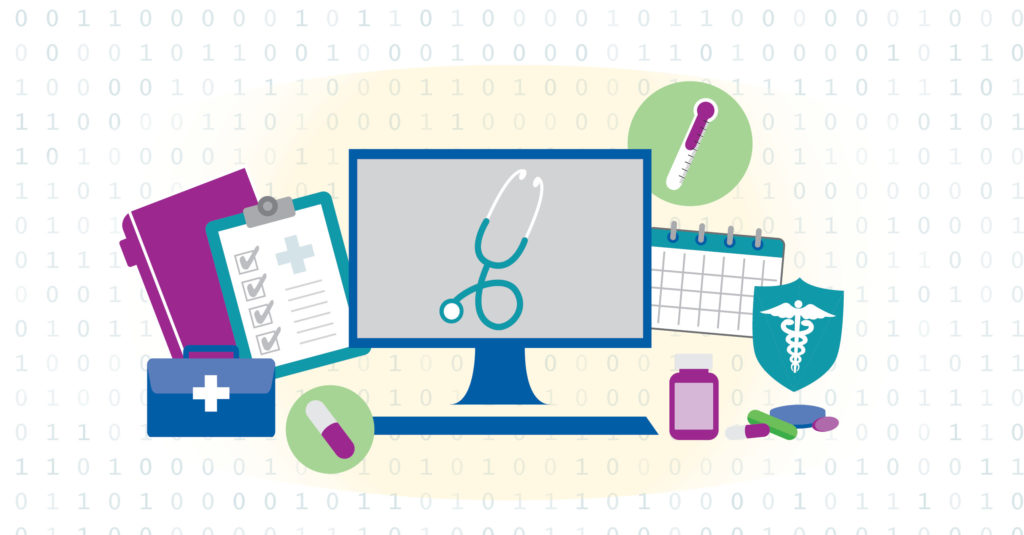Telehealth Has the Potential to Bridge Gaps in Psychiatric and Behavioral Health Care
Telehealth Has the Potential to Bridge Gaps in Psychiatric and Behavioral Health Care https://pediatricsnationwide.org/wp-content/uploads/2021/02/More-to-Telehealth_Page-28-1024x535.jpg 1024 535 Jessica Nye, PhD Jessica Nye, PhD https://secure.gravatar.com/avatar/?s=96&d=mm&r=g- July 24, 2022
- Jessica Nye, PhD

A growing body of evidence supports telebehavioral health delivery for children, adolescents and their families, as outcomes are comparable to in-person treatment delivery. Despite evidence of efficacy, regulatory and financial concerns and technology barriers continue to impede widespread uptake of telebehavioral health.
“There have definitely been silver linings to the pandemic, and this is one of them. In-person restrictions really forced us to jump into the deep end. At Nationwide Children’s, we went from less than 1% of telebehavioral health visits prior to the pandemic to 99% via telebehavioral health in a matter of a few days in response to COVID-19,” says Jennifer Reese, PhysD, psychologist in the Department of Psychiatry and Behavioral Health at Nationwide Children’s Hospital.
Telebehavioral health could improve access to certain patient groups, Dr. Reese explains. For instance, it can be difficult for single parent households to transport an entire family to appointments for one of the children. For families who live in rural communities, telebehavioral health has the potential to connect them to care which is greatly needed as more than 70% of counties in the United States do not have access to child and adolescent psychiatrists.
For a recent publication in Psychiatric Clinics of North America, Dr. Reese and colleagues surveyed 2,650 behavioral health patients between August and September 2020. They found that 64.72% thought telebehavioral health was equal to in-person visits and 11.21% thought it was better. Nearly three quarters (74.04%) stated they agreed or strongly agreed they would choose telebehavioral health for future visits.
From the clinician standpoint, telebehavioral health can allow for more flexible working hours which may be more suited for individuals with caregiving responsibilities.
Despite potential benefits, there remain significant barriers to telebehavioral heatlh uptake. For example, there can be challenges with licensing requirements or state-specific guidelines when delivering care over state lines. There is also a concern for parity in reimbursement for telebehavioral health services.
Going forward, educating providers how to translate their in-person clinical skills to the digital environment and how best to decide which situations telebehavioral health is appropriate for is needed.
“We definitely want to be thoughtful about when and how we use telebehavioral health, if we have somebody who has significant safety concerns, it’s more compelling to bring them into a clinic setting. If there’s some kind of emergency that presents itself, they’re going to be right there for us to provide the support they need. There may be other presenting problems or interventions that are best addressed or utilized through in-person care. All other factors being equal, patient and family preference will also need to be taken into account,” concludes Dr. Reese.
Reference:
Reese JB, Ramtekkar U. Telebehavioral Health: Workforce, Access, and Future Implications. Psychiatric Clinics of North America. 2022;45(2):313-319.
About the author
Jessica Nye, PhD, is a freelance science and medical writer based in Barcelona, Spain. She completed her BS in biology and chemistry and MS in evolutionary biology at Florida State University. Dr. Nye studied population genetics for her doctorate in biomedicine at University of Pompeu Fabra. She conducted her postdoctoral research on the inheritance of complex traits at the Autonomous University of Barcelona.
-
Jessica Nye, PhDhttps://pediatricsnationwide.org/author/jessica-nye-phd/
-
Jessica Nye, PhDhttps://pediatricsnationwide.org/author/jessica-nye-phd/
-
Jessica Nye, PhDhttps://pediatricsnationwide.org/author/jessica-nye-phd/January 3, 2022
-
Jessica Nye, PhDhttps://pediatricsnationwide.org/author/jessica-nye-phd/
- Posted In:
- Clinical Updates
- In Brief
- Research










